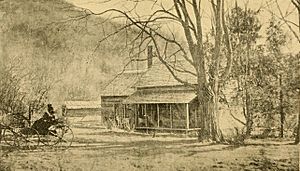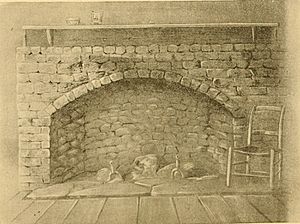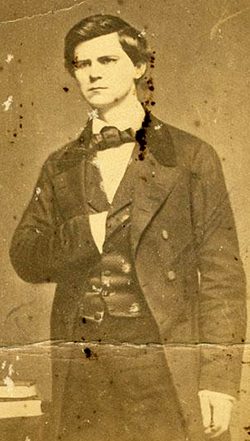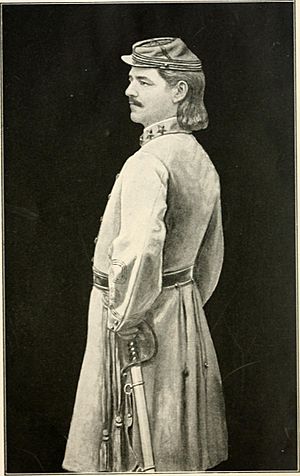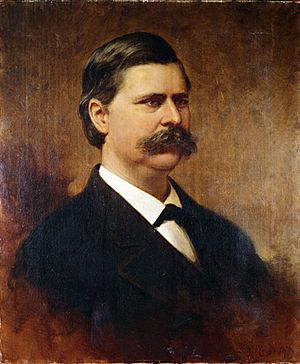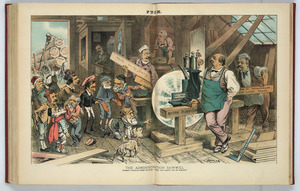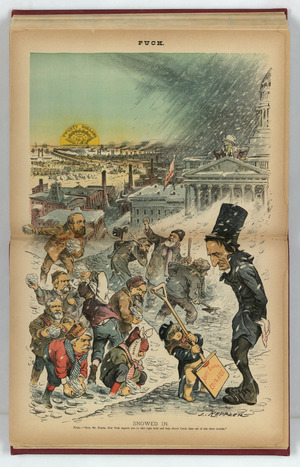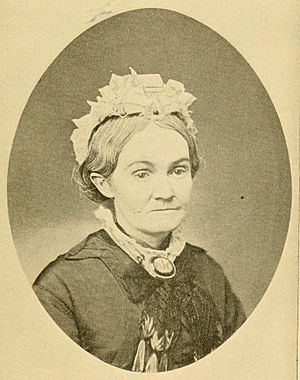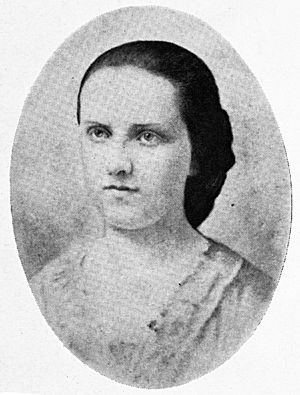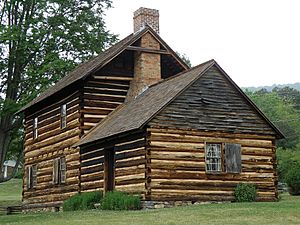Zebulon Baird Vance facts for kids
Quick facts for kids
Zebulon Vance
|
|
|---|---|
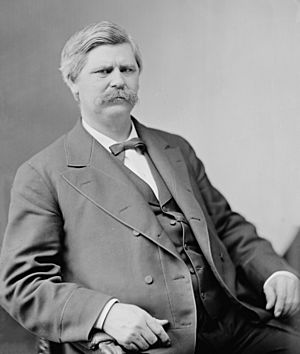 |
|
| United States Senator from North Carolina |
|
| In office March 4, 1879 – April 14, 1894 |
|
| Preceded by | Augustus S. Merrimon |
| Succeeded by | Thomas Jarvis |
| 37th and 43rd Governor of North Carolina | |
| In office January 1, 1877 – February 5, 1879 |
|
| Lieutenant | Thomas J. Jarvis |
| Preceded by | Curtis Brogden |
| Succeeded by | Thomas Jarvis |
| In office September 8, 1862 – May 29, 1865 |
|
| Preceded by | Henry Clark |
| Succeeded by | William Holden |
| Member of the U.S. House of Representatives from North Carolina's 8th district |
|
| In office December 7, 1858 – March 3, 1861 |
|
| Preceded by | Thomas L. Clingman |
| Succeeded by | Robert B. Vance |
| North Carolina Senate | |
| In office December 1854 – November 1856 |
|
| Succeeded by | David Coleman |
| Personal details | |
| Born | May 13, 1830 Reems Creek, Buncombe County, North Carolina, U.S. |
| Died | April 14, 1894 (aged 63) Washington, D.C., U.S. |
| Resting place | Riverside Cemetery |
| Political party | Whig (1852–1856) American (1857) Conservative Party (1862–1868) Democratic (1868–1894) |
| Education | Washington College Academy University of North Carolina at Chapel Hill |
| Signature | |
| Military service | |
| Allegiance | Confederate |
| Rank | Colonel |
| Unit | 26th North Carolina Infantry Regiment Rough and Ready Guards |
| Battles/wars | Battle of New Bern Seven Days Battles |
Zebulon Baird Vance (May 13, 1830 – April 14, 1894) was an American lawyer and politician. He served as a U.S. Senator and was the 37th and 43rd governor of North Carolina. During the American Civil War, he was also a Confederate officer.
Vance was a talented writer and speaker. He became an important leader in the South during and after the Civil War. He supported modernizing the Southern economy. He also wanted to expand railroads and build more schools. Vance often spoke out against unfair treatment of Jewish people. While he was seen as forward-thinking for his time, he also owned enslaved people and held racist views.
Contents
Early Life and Education
Zebulon Vance was born in a log cabin in Reems Creek, Buncombe County, North Carolina. He was the third of eight children. His family owned a large library for their time. They also enslaved up to eighteen people.
At age six, Vance started attending schools away from home. When he was thirteen, his father died. This forced Vance to leave Washington College Academy in Tennessee. His mother sold much of their property to pay debts. The family moved to Asheville. Vance and his brother attended Newton Academy there.
To help his family, Vance worked as a hotel clerk. He later studied law in Asheville. When he was 21, he asked former North Carolina governor David Lowry Swain for a loan. Swain, who was then president of the University of North Carolina at Chapel Hill, helped Vance get a $300 loan.
Vance attended the University of North Carolina at Chapel Hill in 1851. He was a very bright student. He joined the Dialectic Society, which helped him improve his speaking skills. He repaid his loan with interest in 1852. After college, he continued to study law in Raleigh.
Early Career in Politics
Vance became a lawyer in 1852 and started his practice in Asheville. He was quickly elected as the Solicitor of the Court of Pleas. He was known for his quick wit and humor in court.
Vance became interested in politics after helping a presidential candidate in 1852. In 1853, he attended a meeting about building a railroad through Western North Carolina.
North Carolina Senate
Vance was elected to the North Carolina Senate as a Whig in 1854. Whig policies helped smaller farms like those in Western North Carolina. The Democratic Party at the time mostly supported large slave plantations.
In the legislature, Vance worked on transportation issues. He supported extending the Western North Carolina Railroad into the mountain counties. When the Whig Party broke apart over slavery, Vance joined the American Party, also known as the Know-Nothings. He lost his bid for reelection in 1856.
Journalism Work
In 1855, Vance joined the Asheville Spectator newspaper as an editor. He wrote about the search for Dr. Elisha Mitchell, who disappeared while exploring a mountain. Vance's story about the search is considered the most complete record of the event. He later became a half-owner of the newspaper.
U.S. Congress

In 1858, Vance ran for a seat in the U.S. Congress. He gave many speeches that made him very popular. He was elected and, at 28, was the youngest member of Congress. He was reelected in 1859.
Vance spoke out against Congress giving large pay increases to its members. He also disliked the government's constant debt.
Views on Slavery and Secession
In Congress, Vance supported slavery. He believed enslaved people should remain in bondage but be treated humanely.
Vance was against North Carolina leaving the Union. He wanted to find a way to keep both slavery and the Union. He warned against rushing into secession. However, when the Battle of Fort Sumter happened and President Lincoln called for volunteers, Vance changed his mind. He said he would rather fight against the North than against the South. He then resigned from Congress.
Civil War Service
In May 1861, Vance formed a company of local men called the Rough and Ready Guards. They became part of the 14th North Carolina Infantry. Vance later became a colonel of the 26th North Carolina Infantry Regiment.
Vance and his troops fought in the Battle of New Bern in March 1862. His men held back the enemy for five hours, even though they were greatly outnumbered. Vance showed great bravery during a difficult retreat. In July 1862, his regiment fought in the Seven Days Battles. Vance's leadership during these battles made him a strong candidate for governor.
First Term as Governor
Winning the Election
In 1862, Vance ran for governor as the "soldier's candidate." He easily won the election without leaving his troops to campaign. He simply wrote a letter saying he would accept the responsibility if chosen. His supporters highlighted that he was fighting on the battlefield while his opponent was at home.
Vance won by a large margin, the biggest in North Carolina's history for a governor's race. He learned he won while serving in the trenches near Petersburg, Virginia. He then resigned from the army and traveled to Raleigh to become governor at age 32.
Leading During Wartime
Vance's main goal as governor was to protect North Carolina during the war. He tried to get more troops and supplies from the Confederate government. When soldiers were scarce, he offered forgiveness to deserters who returned to duty. Many soldiers came back.
Vance worked hard to provide food, clothing, and weapons for North Carolina's soldiers. He also cared for their families. He used special ships called blockade runners to bring in needed goods like shoes, blankets, and medicine. North Carolina was the only state that could fully clothe and equip its regiments during the Civil War. Vance even shared extra supplies with other Confederate troops.
Vance often disagreed with the Confederate government. He strongly believed in individual rights. When President Jefferson Davis wanted to imprison people without trial, Vance refused. North Carolina was the only state that kept its courts open and respected the right to a fair trial during the war. Vance also opposed the Confederate draft system, especially the rule that allowed rich plantation owners to pay others to fight for them. He called it "a rich man's war and a poor man's fight."
Vance later wrote that his main reason for supporting the Confederacy was to keep slavery. However, historians note that he helped North Carolinians by protecting their rights and providing for them during the war.
Second Term as Governor
Vance was reelected governor in 1864. In April 1865, as Union troops approached Raleigh, Vance tried to meet with General William Tecumseh Sherman to save the city. While they didn't agree on ending the war, Raleigh was saved from being destroyed. Vance then met with Confederate President Jefferson Davis, who released him from his duties.
On April 26, 1865, Vance learned that Confederate General Joseph E. Johnston had surrendered. Vance then told the people of North Carolina to return home and keep order. He officially surrendered to General John Schofield on May 2, 1865.
On May 29, 1865, William Woods Holden, Vance's former opponent, was appointed governor by President Andrew Johnson.
Imprisonment
Vance was arrested on his 35th birthday, May 13, 1865. He was taken to the Old Capitol Prison in Washington, D.C.. He shared a small cell and had to pay for his meals. Vance was worried about his family. President Johnson paroled him on July 6, 1865, after 47 days in prison. Vance was formally pardoned in 1867, though no charges were ever filed against him.
After the War

After the war, Vance practiced law in Statesville and then in Charlotte, North Carolina. He handled cases in many towns.
Political Challenges
The Fourteenth Amendment of 1868 prevented former Confederates like Vance from holding public office. Vance was upset by this. He also resented that the amendment gave African American men citizenship and political rights, while he was kept out of politics. Around 1868, he began using racist language to gain support for his party.
In 1870, the North Carolina legislature chose Vance for the U.S. Senate. But because of the Fourteenth Amendment, he needed a two-thirds vote from Congress to serve. Vance tried for two years to get this approval but failed. He then resigned from the appointment.
Lecture Circuit
While out of politics, Vance earned money by giving speeches. His first major speech was "The Duties of Defeat" in 1866. He became a nationally known speaker. He could adapt his speeches to any audience, using humor and local stories. Some of his popular speeches included "The Humorous Side of Politics" and "The Demagogue."
Around 1870, Vance began giving a speech called "Scattered Nation" hundreds of times. In this speech, he praised Jewish people and called for religious tolerance. This was unusual for the time, as there were few Jewish people in North Carolina and antisemitism was common. His friendship with Samuel Wittkowsky, a Jewish man who helped Vance during his arrest, may have influenced him.
Third Term as Governor
In 1875, President Ulysses S. Grant signed a bill that allowed Vance to return to public office. Vance ran for the U.S. Senate but lost. In 1876, he was elected governor of North Carolina for his third term. He served for two years. His inauguration in 1877 started a tradition of big celebrations for governors.
Education Reforms
As governor, Vance was considered progressive for his time. He wanted to improve farming, expand teacher training, and add more public schools. He also supported separate but equal schools for African Americans. In 1879, two normal schools (teacher training schools) were created: one for white teachers and the State Colored Normal School for black teachers. The State Colored Normal School later became Fayetteville State University.
Railroad Expansion
During his third term, Vance finally brought the railroad to Western North Carolina. This had been a dream of his since 1853. He suggested using convicts to work on the Western North Carolina Railroad. Many of these convicts were formerly enslaved people arrested under vagrancy laws.
The railroad project was a huge challenge. Vance wanted the convicts to be treated well. He wrote to the Penitentiary Board when he heard about cruel treatment, like overwork and whippings. However, conditions were still very harsh. At least 125 of 558 convicts died from bad weather, poor housing, lack of food, and dangerous accidents. Despite these tragedies, Vance pushed for the work to continue. The new railroad network helped boost the state's economy by moving goods to farms, factories, and markets.
U.S. Senate Career
In 1878, Vance was elected to the United States Senate. He became a leader of the Democratic Party. While he fought for Southern interests, he showed little anger toward the North. This helped bring Congress together after the Civil War.
Vance was reelected to the Senate in 1885 and 1891. He served until his death in 1894. He worked on important committees, including finance.
Reconstruction Views
In the Senate, Vance spoke about removing military control over Southern elections. He argued that Southern states could govern themselves. He also supported the Blair Education Bill, which asked for federal money to educate formerly enslaved people in the South. He noted North Carolina's efforts to create schools for them.
Vance believed in white supremacy. He said he wanted justice for formerly enslaved people but did not want them to rule his people. He admitted there were cases of mistreatment but claimed North Carolina was better than other Southern states.
Farmers' Alliance
Vance faced challenges from the Farmers' Alliance, a group that acted like a third political party. Vance often sided with farmers. He believed tariffs (taxes on imported goods) hurt many people. He encouraged farmers to organize to protect themselves. He introduced a bill for the farmers, but later thought it was not practical. Vance urged farmers to stick with the Democratic Party.
National Issues
In national politics, Vance generally supported President Grover Cleveland. He opposed some major laws of the time, like the McKinley Tariff. He also opposed monopolies (when one company controls an entire industry).
Vance supported increasing the amount of money in circulation, especially silver coins. At the time, the amount of money was limited by the amount of gold. Vance believed more money would lead to higher prices and wages, benefiting everyone. His last speech in the Senate, in 1893, was against repealing the Sherman Silver Purchase Act. He spoke for two hours, despite being ill.
Ku Klux Klan Connections
After the Civil War, the Ku Klux Klan (KKK) used terror in the South. Some people have claimed Vance was a member or even a leader of the KKK.
The first known claim linking Vance to the KKK came from an affidavit in 1871. It said people heard Vance was the KKK's state chief, but the person giving the affidavit did not know this for sure. A 1924 book also claimed Vance was a KKK leader, but this book is known to have made up details and copied from other sources.
However, Vance publicly spoke against the KKK in 1870. He said he refused to join any secret society like it. He also said he gave a speech against such groups. Historians note that Vance used the tension created by the KKK to help his party win elections. He also held racist views, even though he disliked the KKK's violent methods.
Personal Life and Legacy

In 1853, Vance married Harriette "Hattie" Newell Espy. They had five sons. The family lived in Asheville and enslaved six people who worked in their home and garden.
Vance was a member of the Ancient Free and Accepted Masons. He also helped create Riverside Cemetery in Asheville. In 1875, he was asked to be president of the University of North Carolina, but he declined.
In 1865, Vance had a stroke that affected his face. His first wife, Harriette, died in 1878 after a long illness. Vance joined her Presbyterian church that year.
In 1880, Vance married Florence Steele Martin, a wealthy widow. They built a home called Gombroom in Black Mountain, North Carolina. Vance's health declined after 1890. He lost an eye after falling from a wagon. He traveled to other countries for his health.
Vance died in Washington, D.C., on April 14, 1894, after another stroke. His funeral was attended by many important people, including the President. His body was taken by train to Raleigh and then to Asheville for burial. Thousands of people lined the tracks to pay their respects. He was buried at Riverside Cemetery.
At his death, Vance had little money. His estate was worth less than $5,000.
Honors and Memorials
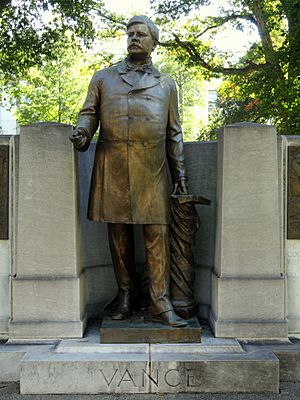
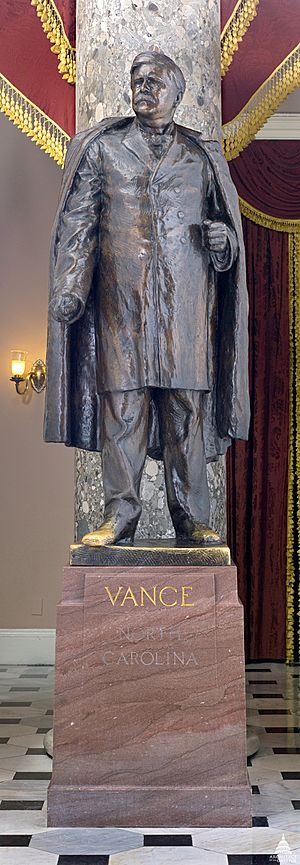
Zebulon Vance was greatly admired in North Carolina. Many places and things were named after him:
- The Vance Monument, a tall stone pillar in Asheville (removed in 2021).
- Statues of Vance at the North Carolina State Capitol in Raleigh and in the National Statuary Hall Collection in Washington, D.C.
- The Zebulon B. Vance Birthplace is a State Historic Site in Weaverville, North Carolina.
- The Historic Vance House and Civil War Museum in Statesville, North Carolina.
- Towns like Vanceboro and Zebulon.
- Vance County, North Carolina.
- Several schools, though some have changed their names recently due to controversies.
- Many organizations, including Masonic lodges and Sons of Confederate Veterans camps.
For over 75 years, a Jewish organization (B'nai B'rith) and the United Daughters of the Confederacy held a joint ceremony at the Vance Monument in Asheville. They laid a wreath on his birthday.
Vance remains a complex figure. While he was seen as a hero by many, his connection to slavery and his racist views have led to recent discussions and the removal of some of his memorials.
See also
- List of United States Congress members who died in office (1790–1899)
- List of monuments and memorials removed during the George Floyd protests


